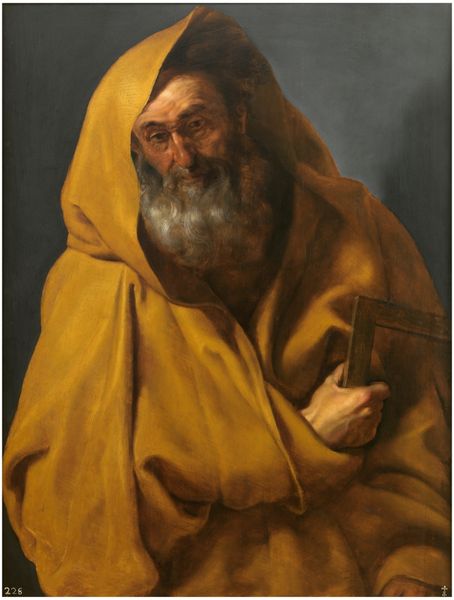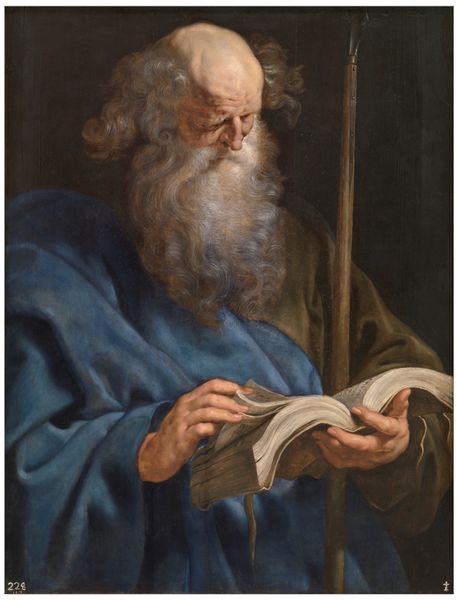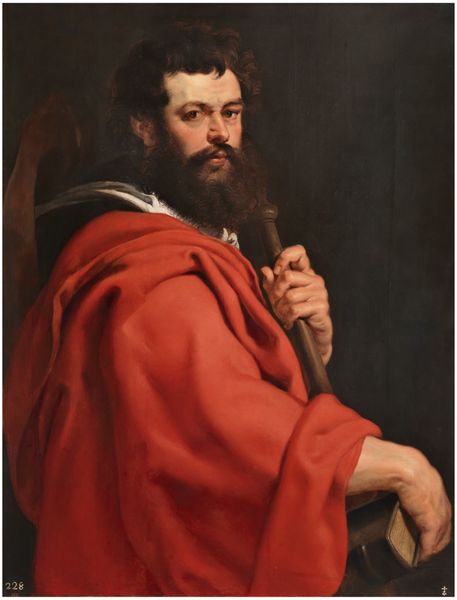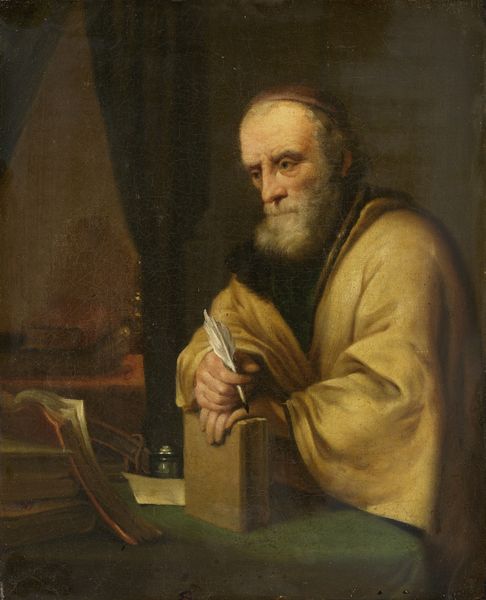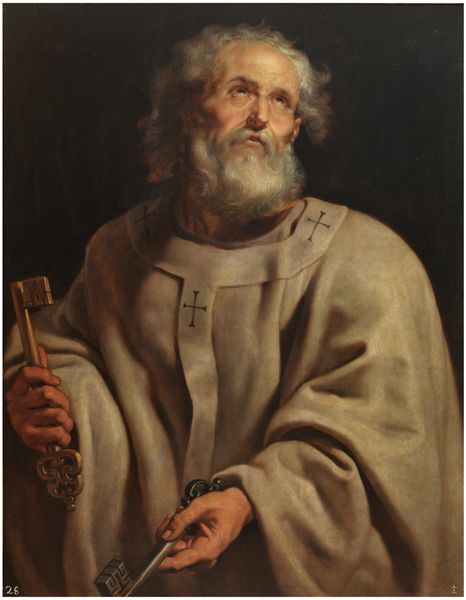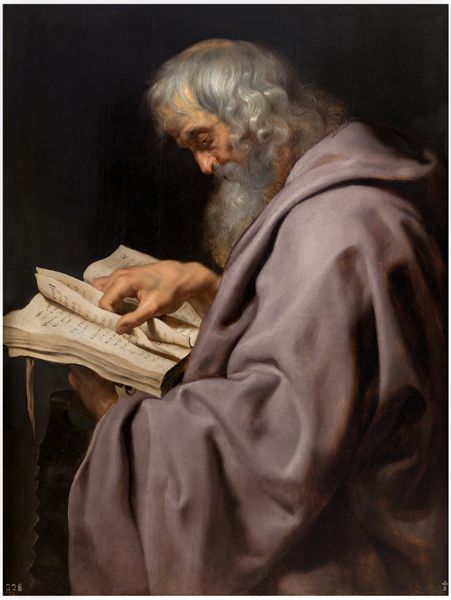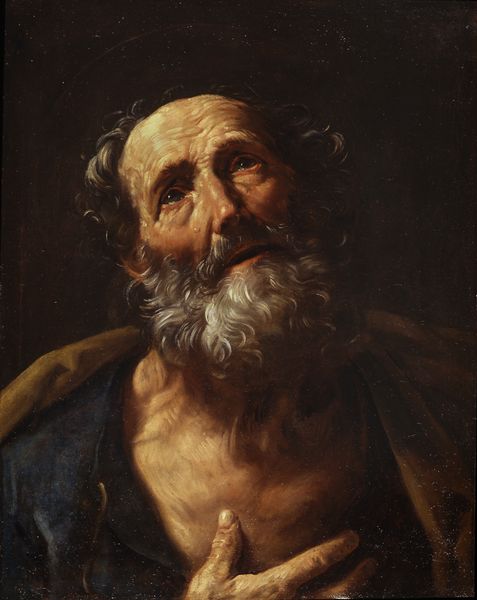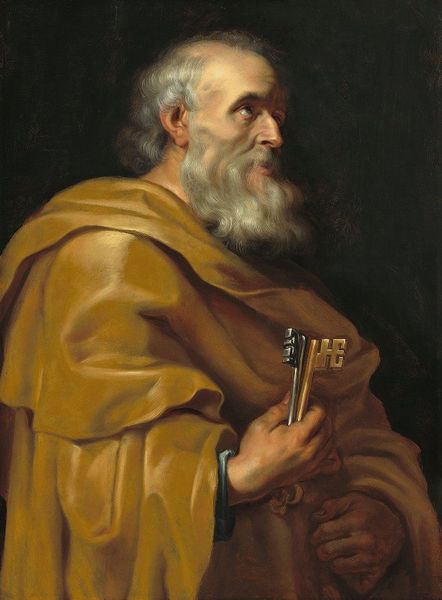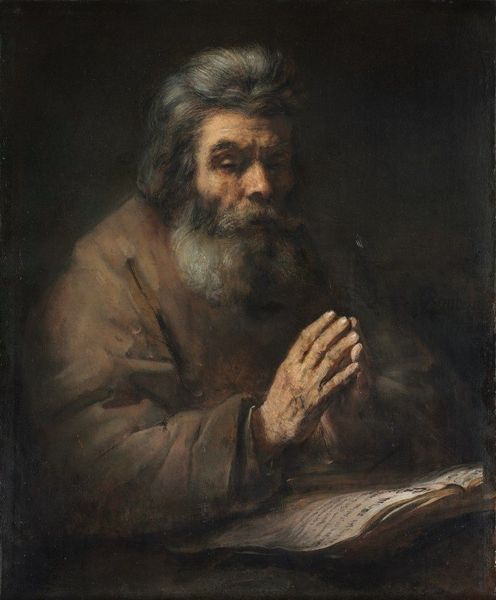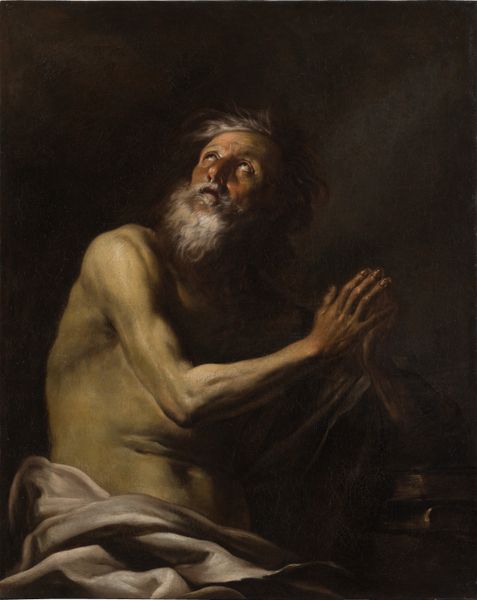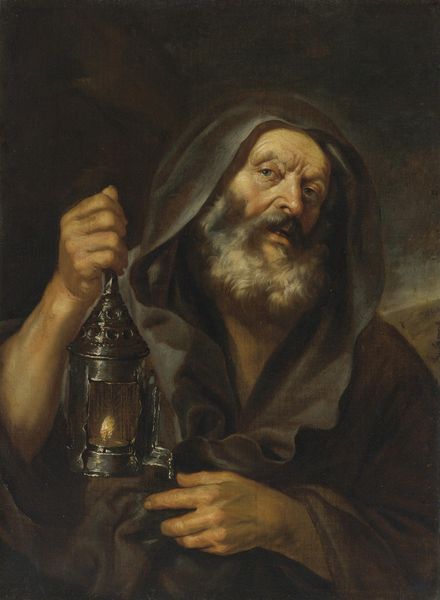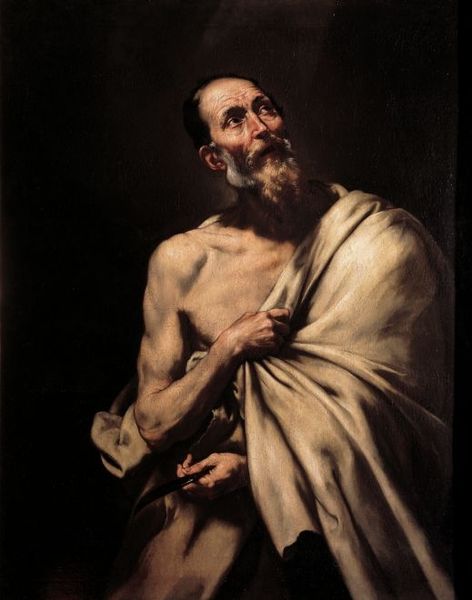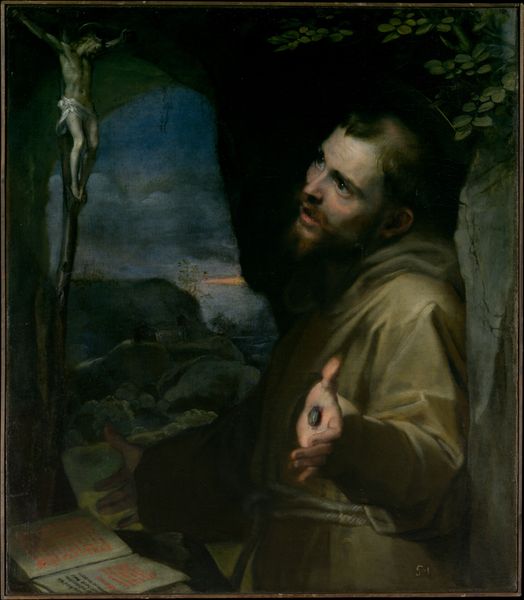
oil-paint
#
portrait
#
baroque
#
oil-paint
#
history-painting
Copyright: Public domain
Editor: Here we have Peter Paul Rubens' "Saint Philip," an oil painting from 1612. It's quite striking, with a serious, almost burdened mood. He's holding a large cross. What do you see in this piece? Curator: The cross, naturally, is the dominant symbol, directly referencing Philip's martyrdom. It’s an instrument of torture and salvation, intertwined. But observe how Rubens renders the saint’s gaze, averted yet resolute. Do you notice where his eyes are directed? Editor: They're looking…off to the side, not quite at the cross, but definitely not downcast. Curator: Exactly. He embodies a complex emotional state – acceptance tinged with melancholy, perhaps? It invites contemplation on faith, duty, and sacrifice, doesn’t it? Also, look at his hands, their positioning... Editor: Yes, one is grasping the cross, and the other is more open. It creates a really interesting tension between action and contemplation. Curator: Precisely. Hands, throughout art history, often convey unspoken narratives. The hand grasping embodies action; the open, offering, perhaps mercy. Rubens masterfully uses the cultural weight associated with these religious symbols to elicit feelings that echo centuries. And what feeling would that be for you? Editor: It is hard to pinpoint to only one emotion! Contemplation and solemn respect, maybe, given all those layers. Curator: Yes. Icons operate on multiple levels; they are not static but active participants in a dialogue across time. Rubens invites us into that very conversation, and understanding visual motifs helps you comprehend historical and personal memory that art builds! Editor: It’s fascinating how symbols can be so loaded with history. This piece certainly gives a lot to think about.
Comments
No comments
Be the first to comment and join the conversation on the ultimate creative platform.
